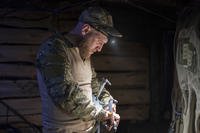The U.S. military's future helicopter fleets must share more parts in order to better control operational and maintenance costs, officials said.
Nick Lappos, an advanced technology fellow at Sikorsky Aircraft and chairman of an industry group called the Vertical Lift Consortium, said the Pentagon should create a central office for future vertical lift programs in part to better coordinate the development of systems and subsystems capable of using common parts.
"It's amazing how uncommon today's systems are," he said during a speech on Wednesday at the Center for Strategic and International Studies, a think tank in Washington, D.C.
The U.S. Army last year picked two industry teams -- one led by Sikorsky and another headed by Bell Helicopter -- to move forward with development of technology demonstrators as part of the Army's Joint Multi-Role, or JMR, program.
Sikorsky, which Lockheed Martin Corp. recently announced it would acquire from United Technologies Corp., teamed with Boeing Co. to develop the SB>1 Defiant, a medium-lift chopper based on Sikorsky's S-97 Raider and X2 coaxial design. Meanwhile, Bell, which is owned by Textron Co., partnered with Lockheed to develop a tilt-rotor concept called the Bell V-280 Valor.
Bell makes the Army’s OH-58 Kiowa scout helicopter, among others, and partnered with Boeing to develop and build the V-22 Osprey tilt-rotor aircraft, which is flown by the Marine Corps and Air Force. But the companies pursued a different teaming arrangement for the Army’s next-generation helicopter program. It wasn't immediately clear how Lockheed's acquisition of Sikorsky may affect its partnership with Bell.
The Army's development effort could lead to a potentially $100 billion so-called Future Vertical Lift program to place the service's fleets of UH-60 Black Hawk utility helicopters made by Sikorsky and AH-64 Apache attack choppers made by Boeing, though any aircraft probably wouldn't enter service until the 2030s.
Lappos said future choppers should have relatively identical or at least common cockpits, crew stations and other "core" systems. Many pilots and maintainers today can only work with a particular type of aircraft, he said. Moving toward more uniform systems has the potential to significantly reduce training and maintenance costs, he said.
James Kelly, an acquisition specialist at the Pentagon who leads the F-35 logistics team, agreed that commonality could have "huge" operational and cost-reduction benefits.
"Our aircraft spend an awful lot of time in corrosion correction type maintenance," he said at the forum. "There's a tremendous amount of potential here to reduce operating costs on future systems."








